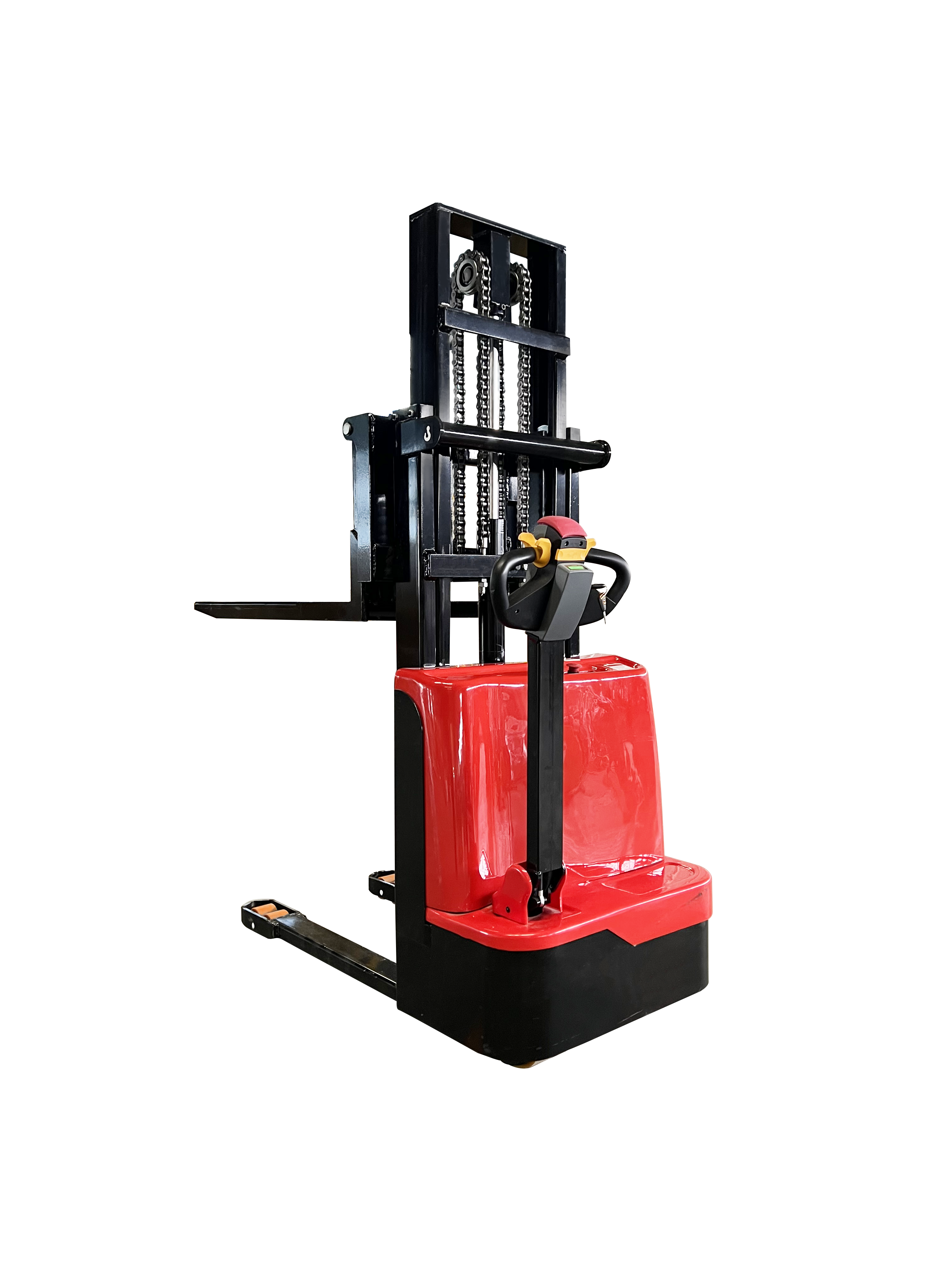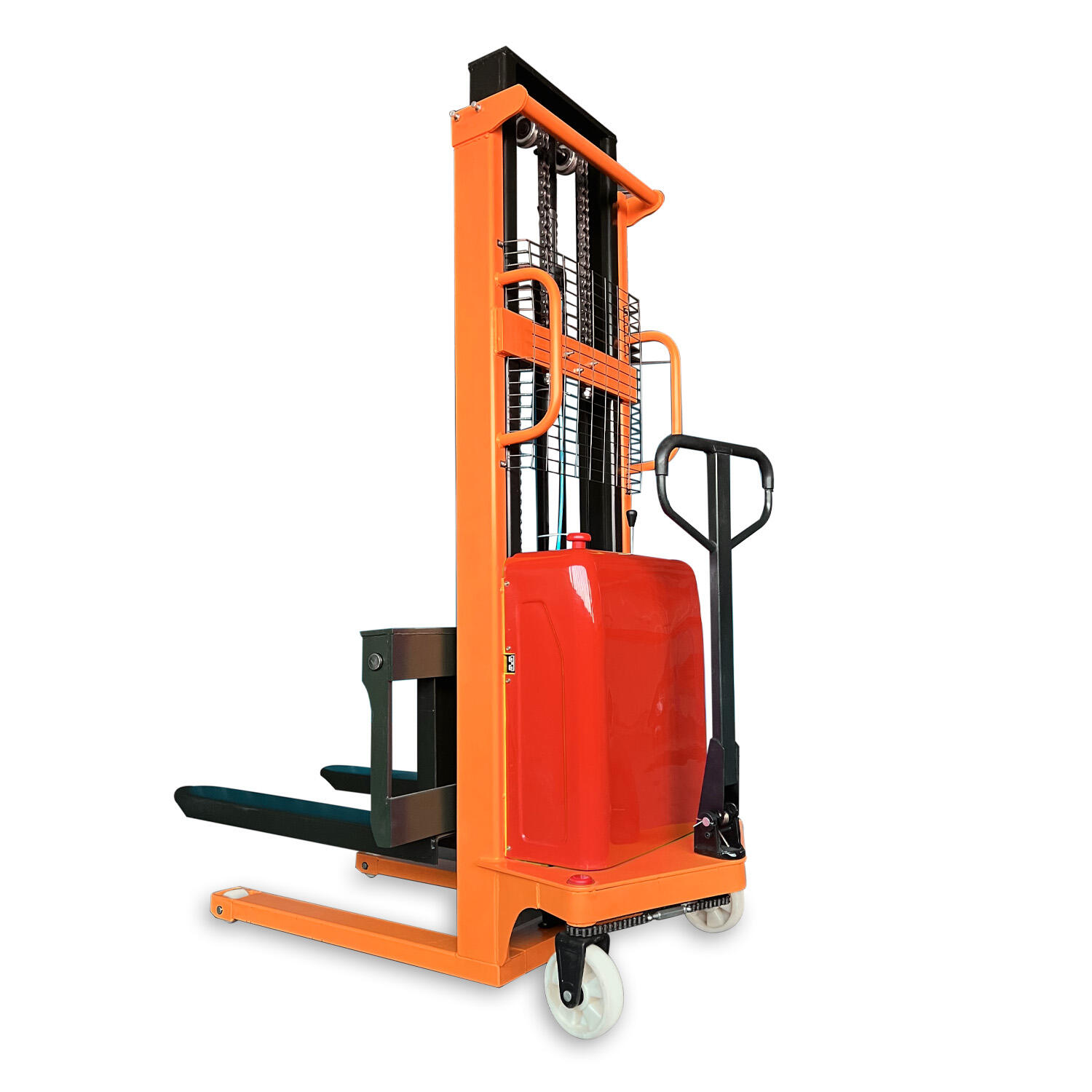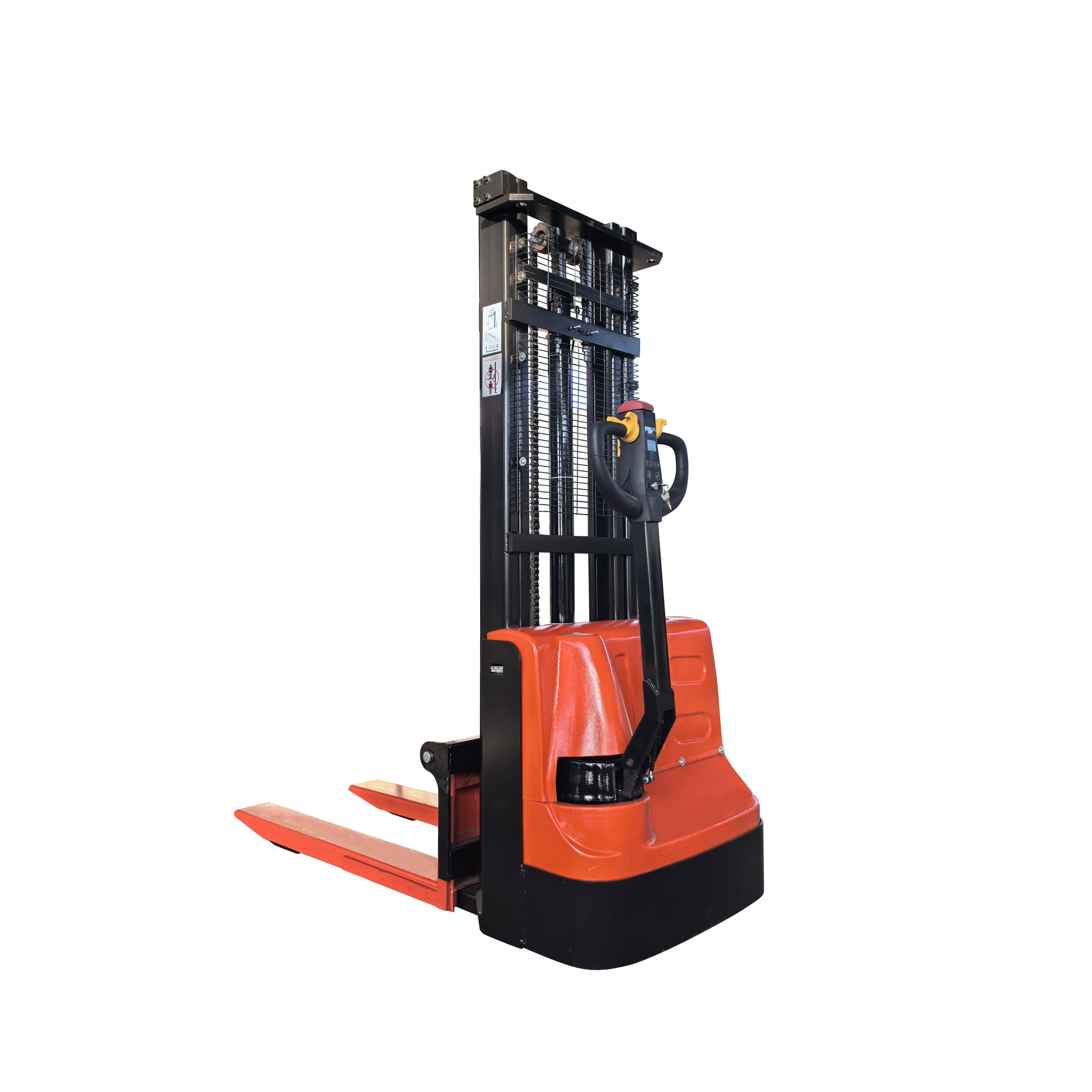A warehouse pallet stacker is an essential piece of equipment designed to streamline the storage and retrieval of palletized goods in warehouse environments, offering a efficient solution for lifting, moving, and stacking pallets to maximize vertical space utilization. This specialized tool is engineered to handle the unique demands of warehouses, where space is often at a premium and the need for quick, safe, and organized material handling is paramount. Unlike traditional forklifts, which are larger and more suited for heavy-duty outdoor or large-scale indoor operations, a warehouse pallet stacker is compact, maneuverable, and focused on pallet-specific tasks, making it ideal for navigating narrow aisles and tight storage areas. The core design of a warehouse pallet stacker revolves around its ability to lift pallets to various heights and move them with precision. It typically features two sturdy steel forks that slide under standard pallets, a hydraulic or electric lifting mechanism, and a control system that allows operators to maneuver the stacker and adjust the fork height. The lifting capacity of a warehouse pallet stacker ranges from 1,000 kg to 3,000 kg, with some heavy-duty models capable of handling even more, depending on the specific needs of the warehouse. The lifting height varies as well, with most models able to reach heights between 2 meters and 6 meters, enabling pallets to be stacked on high shelves or racks, thus utilizing vertical space that would otherwise go unused. One of the key advantages of a warehouse pallet stacker is its maneuverability, which is crucial in warehouse settings where aisles are often narrow to maximize storage density. Its compact size allows it to navigate through aisles as narrow as 1.5 meters, making it possible to access pallets stored in tight corners or between closely spaced racks. Many models are equipped with three wheels, with the front wheel or wheels designed to swivel, providing a tight turning radius that enhances agility. This maneuverability not only saves time but also reduces the risk of damage to pallets, goods, or warehouse infrastructure, such as racks or walls, which can occur with larger, less agile equipment. Warehouse pallet stackers are available in various power options, including manual, hydraulic, and electric, each suited to different warehouse environments and workloads. Manual stackers are operated by hand, requiring the operator to pump a lever to lift the forks, making them suitable for light-duty applications with low throughput, such as small warehouses or retail backrooms. Hydraulic stackers use a hydraulic pump, either manual or powered by an electric motor, to lift heavier loads more easily, balancing efficiency and cost for medium-duty operations. Electric stackers, powered by rechargeable batteries, are the most efficient option, offering effortless lifting and movement, making them ideal for high-throughput warehouses where productivity is a priority. Electric models also produce zero emissions and operate quietly, making them suitable for indoor use without concerns about air quality or noise pollution. Safety is a critical feature of any warehouse pallet stacker, with multiple design elements incorporated to protect operators, goods, and the warehouse environment. The forks are designed to securely hold pallets, with many models featuring a locking mechanism that keeps the forks at a set height to prevent accidental lowering. Overload protection systems are common, preventing the stacker from lifting loads that exceed its rated capacity, which reduces the risk of tip-overs or structural damage. The operator’s position is designed for visibility, with a clear line of sight to the forks and surrounding area, helping to avoid collisions with other equipment or personnel. Some models also include safety features such as emergency stop buttons, non-slip platforms, and horn or warning lights to alert others to the stacker’s presence in busy warehouse environments. The versatility of a warehouse pallet stacker extends beyond simple stacking and moving of pallets. Many models come with additional features that enhance their functionality, such as adjustable fork widths to accommodate different pallet sizes, from standard 1200x1000mm pallets to larger or custom sizes. Some stackers are equipped with a tilting function, allowing the forks to tilt slightly to prevent goods from sliding off during movement, which is particularly useful for handling unstable or irregularly shaped loads. Others may include a platform for the operator to stand on, which is beneficial for longer distances or when moving pallets across the warehouse, reducing operator fatigue compared to walking alongside the stacker. In high-throughput warehouses, automated or semi-automated pallet stackers are becoming increasingly popular, integrating with warehouse management systems (WMS) to operate without constant human supervision. These automated stackers can navigate predefined routes, locate pallets using barcode or RFID technology, and stack them in designated locations, significantly increasing efficiency and reducing labor costs. They are particularly valuable in large warehouses or distribution centers where 24/7 operations are required, as they can work continuously without breaks, ensuring a steady flow of material handling. Maintenance of a warehouse pallet stacker is relatively straightforward, with regular upkeep focusing on ensuring the lifting mechanism, wheels, and controls are in good working order. For manual and hydraulic stackers, this includes checking hydraulic fluid levels, lubricating moving parts, and inspecting forks for signs of wear or damage. Electric stackers require additional checks of the battery, charger, and electric motor, ensuring the battery is charged properly and the motor is functioning efficiently. Regular cleaning to remove dirt, debris, and pallet fragments from the wheels and forks helps prevent jams and ensures smooth operation. By following a routine maintenance schedule, warehouse operators can extend the lifespan of the stacker, reduce downtime, and ensure consistent performance. The impact of a warehouse pallet stacker on overall warehouse efficiency cannot be overstated. By enabling pallets to be stacked vertically, it increases storage capacity, often by 50% or more, which can eliminate the need for warehouse expansion or the rental of additional storage space. This vertical storage also improves inventory organization, making it easier to track and retrieve pallets, which reduces picking times and minimizes errors. The speed and ease of operation of a pallet stacker reduce the time required to move and stack pallets, increasing the throughput of the warehouse and allowing staff to focus on other tasks, such as order fulfillment or inventory management. In conclusion, a warehouse pallet stacker is a vital tool for modern warehouse operations, offering a combination of maneuverability, efficiency, and safety that is essential for maximizing storage space and streamlining material handling. Whether manual, hydraulic, or electric, these stackers are designed to meet the specific needs of warehouses, from small retail backrooms to large distribution centers. By investing in a high-quality warehouse pallet stacker, businesses can improve productivity, reduce operational costs, and create a safer, more organized working environment, ultimately enhancing their ability to meet customer demands and stay competitive in the fast-paced world of logistics and supply chain management.


